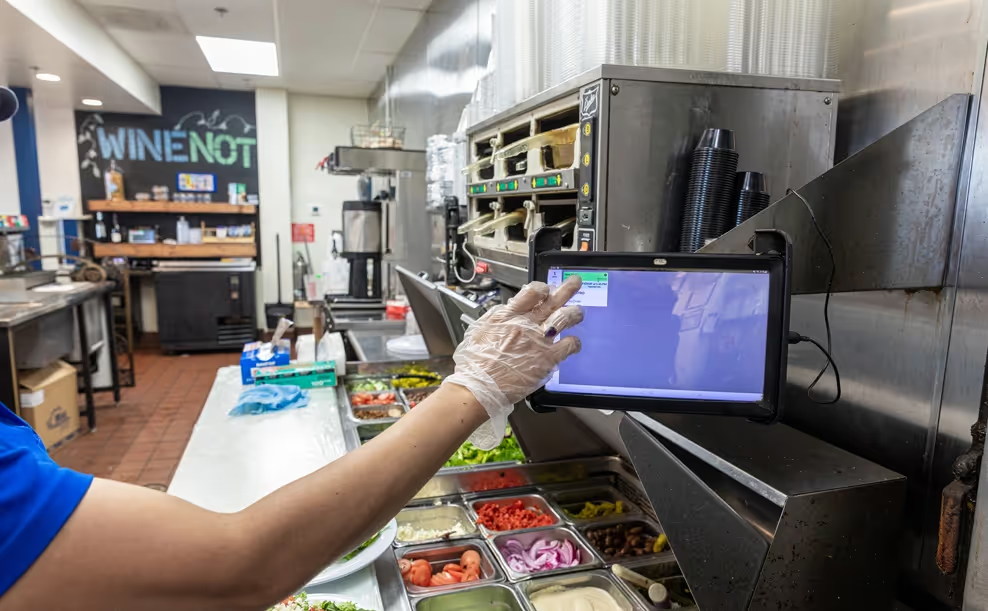Kitchen display systems (KDS) have been around of several decades and have evolved over time to become an essential part of modern restaurants. In this blog post we'll cover the history and advantages of kitchen display systems plus how you can choose the best KDS for your business.
History of Kitchen Display Systems
Before electronic kitchen display systems were developed most restaurants used handwritten paper tickets to prepare orders. Servers or cashiers would write orders on a "chit" and pass it to the kitchen on a ticket spindle. Carbon copy paper allowed these handwritten orders to double a customer receipts for payment. The first major evolution of kitchen systems was the introduction of electronic point of sale systems with printers in the 1980s. Printed tickets had one major advantage over handwritten tickets - the kitchen no longer had to decipher bad handwriting.
The first kitchen display systems also came to market in the late 1980s, but these systems were very simplistic and expensive. In the 1990s and early 2000s, kitchen display system technology continued to evolve, with more advanced features like routing, color-coding, and ticket timers. These improvements helped kitchens operate more efficiently and prepare orders more accurately. However, bulk, expensive hardware limited the number of restaurants that could utilize a KDS.
Today, there are a number of lightweight, affordable kitchen display systems that are accessible to a larger number of restaurants and food operators, including coffee shops, cafes, and even food trucks. This technology has helped a countless number of restaurants improve their operations and better serve their customers.
How Does a KDS Work?
Kitchen display systems receive orders from the POS or online ordering systems and display these orders on screens in the kitchen. This notifies the kitchen staff that there is an order to be prepared. Color-coded headers help the staff stay on track by showing how long ticket have been open and if they're reaching the speed of service thresholds. As employees prepare items they can mark the finished items off the screen. When the whole order has been prepared it is cleared, or "bumped" from the screen.
Benefits Of A Kitchen Display System
There are many benefits that come with using a kitchen display system. Let's take a look at some of the most notable ones.
- Save Time. One of the biggest benefits of using a KDS is that it can help save time. With a KDS, orders are sent directly to the kitchen so there is no need to search for order tickets. This can free up time for the cook to prepare the food and results in faster service times.
- Improve Order Accuracy. When you use a KDS, the cook can see the order on the screen and confirm that they are making the correct food. This reduces mistakes and ensure that the customer gets the right order.
- Improve Communication. A kitchen display system can also help to improve communication between the front and back of house. Orders are sent directly to the kitchen so there is no need for runners or waiters to relay messages. Advanced kitchen display systems can also receive and display order updates automatically. Some kitchen display systems can also communicate order statuses directly with customers.
- Help Reduce Food Waste. Another benefit of using a KDS is that it can help to reduce food waste by reducing the number of re-makes.
Choosing The Right KDS
Now that we've gone over everything you need to know about kitchen display systems, it's time to start shopping for one! There are different types and brands of KDS on the market, so it's important to do your research to find the one that's right for your restaurant.
When shopping for a KDS, there are a few things you should keep in mind. First, map out your current kitchen workflows - how may stations do you have, what's prepared at each station, and how do the stations need to communicate with each other. What order types do you support and how are different order types handles in the kitchen (for example, do you have a single prep line for all orders or do you split dine in orders from to go orders). Next, evaluate if each KDS has the features to support your workflow. It's also critical to make sure the KDS you're considering has an integration to your point of sale.
Finally, consider the cost of the system. Make sure to include both software and hardware costs when determining the total cost. Check to see what type of support the KDS company provides and if it meets your needs. These questions will help you decide which KDS is best for your business.




.png)




.webp)


